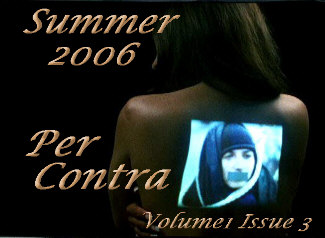
Different Drums, Different Continents? by Chris Nickson
It’s a mighty, overwhelming sound, whether on the small taiko drums, performed with highly exaggerated choreography, or the massive odaiko, bigger than a man, the skin on each head about the size of half a cow.
It’s music not only as spectacle, but also ritual, a show in every sense of the term. The backdrop and costumes are simple, but surprisingly effective and evocative (in the first half they emerge looking like upscale extras from Mad Max, while the second half finds them in short, kimono-like jackets). They use lighting subtly, bringing spots in to highlight the gorgeous polished grain of the wooden drums, and the scrolling on the edge of the skins; this is a troupe that’s paid careful, thoughtful attention to the details.
But that’s where the devil lurks, and he’s obviously advised Mugenkyo (which translates as “limitless reverberation”) well. Nothing’s been forgotten. Even the way they change the positions of the drums onstage between numbers for maximum visual effect is calculated – but without ever seeming too deliberately artful.
It’s riveting to watch and hear, a storm of noise that fills the theatre. Many of the pieces are traditional, although you’d be hard pressed to tell the old from the new in most cases. One thing that becomes very quickly apparent is how alien this drumming is to what we’re familiar with in the West. We’ve come to idolize the backbeat and syncopation that are part of all rock, blues, jazz, R&B, and hip-hop. That’s a style that came out of Africa with the slaves (like the pentatonic scale that’s the base of our main musical styles), and something you simply don’t really find in taiko – only at one point did they establish a neat little groove.
Of course, a relentless barrage of drumming can become overwhelming, but Mugenkyo pace their show, throwing a change up with a long, atmospheric piece. It’s one of the most successful creations of the night, not because it’s such a contrast, but because it offers what’s virtually an acoustic recreation of electronic trance music. Even the usually obnoxious didgeridoo – overused and abused too often – works well in this context, brooding under shimmering gongs, gentle drums and atmospheric flute.
The second half brought a brief introduction to the history and mystery of taiko, a piece with side drums (the okedo) and some of the women acting like psychedelic majorettes. But the emotional climax came with the evening’s penultimate number, on the odaiko again, this time a solo workout for Mackie. He made a single drum do the work of a kit and more. The buzzing overtones created their own high hypnotic drone that pulls in the ear above the rhythms. For 10 minutes every eye was on him and the blurred movement of his arms as he reached up to drum. It was bravura, nothing less, but it was completely irresistible. By the time he’d finished, the audience was as drained as he was. It was the perfect prelude to the last piece, which had the audience clapping for a final release, with the entire troupe smiling at last.
Just when you imagined they’d exhausted the possibilities, they did something different. Brought back for an encore, four of the woman spent the entire number drumming from a crunch position that could only have been devised by an sadistic personal trainer. Yet without even breaking a sweat they kept up a precise, crisp beat that never faltered – a tremendous end to the concert, and one that warranted the standing ovation they received.
Okay, so maybe on one level it was like eating sushi in a restaurant without a Japanese. Ultimately, though does it matter as long as it works? Mugenkyo’s sound and staging worked simply and elegantly, there was a sense of theatre and drama to the evening. And above all, it was musically satisfying, paying homage to the taiko tradition with being a slave to it. It’s as convincing as any Japanese troupe. Mugenkyo used the past as a springboard to the future, bringing in outside ideas and views, and opening a Western window on the East. It’s the good side of globalization.
